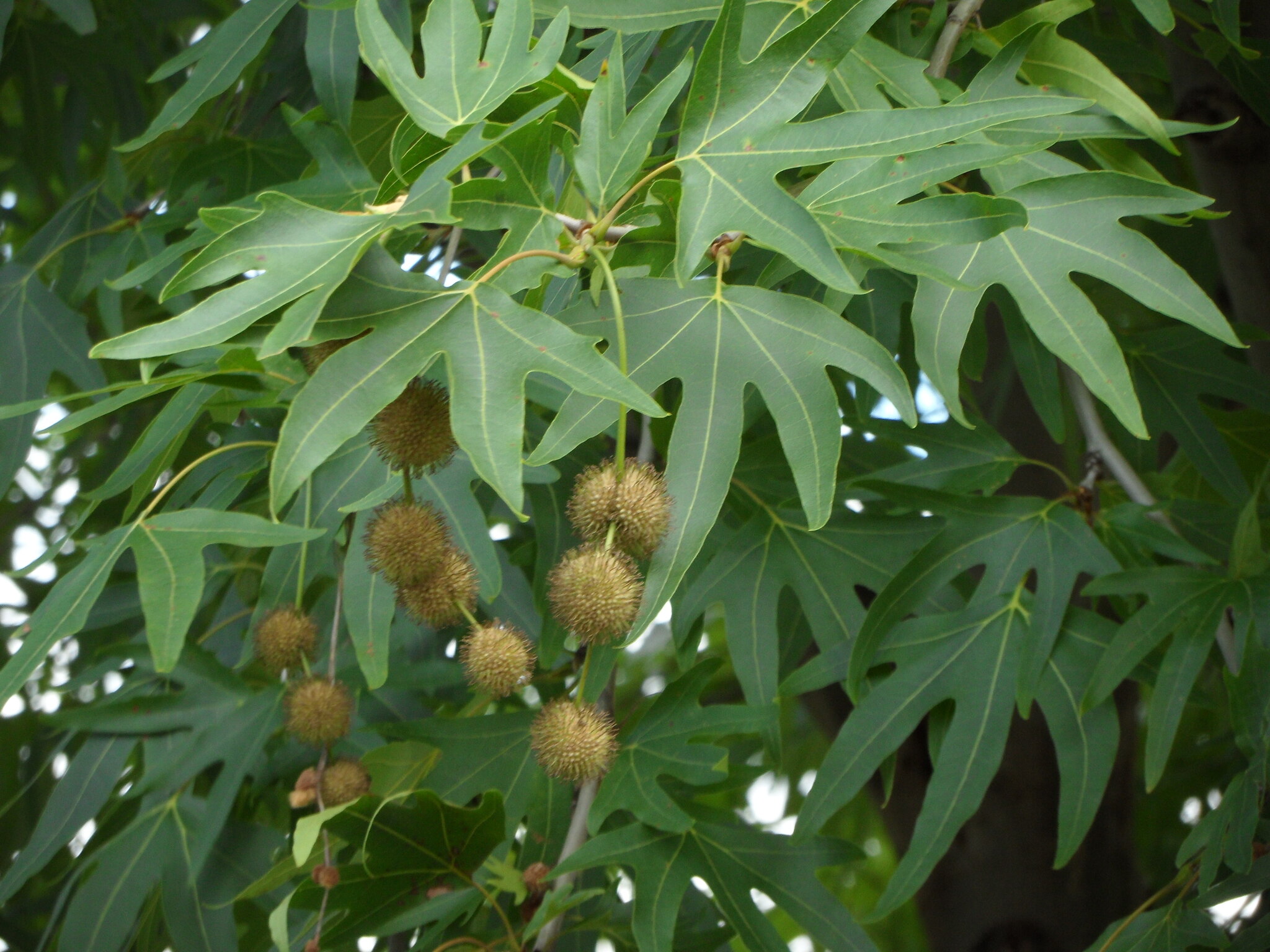
A large tree to 20 m or more tall. Bark flaking to produce a mottled surface. Leaves palmate, to about 20 cm long with 5 lobes cut to below the middle, narrowing to the base and with a stalk that is swollen at the base. Flowers borne in globular clusters, appearing in early spring. Fruits mostly 3-5(7), dangling on a zig-zag stalk, ripening Feb-Mar.
SE Europe, W Asia
Specimens ACT: Kingston (Green Square); Civic (London Circuit). VIC: Castlemaine (Castlemaine Botanical Gardens); Leongatha (Mossvale Park, probably the state's largest).
Meikel (1985).
There is some confusion in Australia over the naming of variants of this species. Seed was introduced in about 1955 by Prof. Lindsay Pryor after a visit to Cyprus in 1953 and stock of this original Cyprus provenance is held in parkland by Yarralumla Nursery, Canberra. From brief published descriptions, but not precise reference to types, this Cyprus stock seemed to fit P. orientalis var. insularis better than P. orientalis var. digitata (L. Pryor, pers. comm.). Seed was grown from this stock and selections made of those with deeply cut leaves. The selections were then distributed in southern states. This probably accounts for some of the leaf variation found in this species although there were also selections with shallower lobing. In general they are quite resistant to plane anthracnose as compared with P. ×acerifolia and some have a degree of muted reddish or orange autumn colour in the leaves in contrast to the smudgy yellow-brown of the London Plane.
In Melbourne large-leaved variants with extremely deep-cut and wide-spreading lobes with few teeth on their margins are generally known under the cultivar name 'Digitata' and at least some are probably selections of the Cyprus provenance Canberra trees. In Canberra original Cyprus provenance trees are planted in Green Square, Kingston and along London Circuit in Civic, others were sent to Melbourne University for quadrangle redevelopment in the late 1970s. The situation is confused by the use in horticultural literature of the names f. digitata (Gordon) Janko (P. digitata Gordon) which cannot be clearly related to trees in Australia. Also the cultivar name 'Digitata' is used in the United Kingdom to refer to trees with small fruits 1-1.5 cm inch wide and probably with infertile nutlets (Bean, 1976), a situation not true for those trees in Australia with this cultivar name. Cretan and Cyprian specimens have been referred by some botanists to P. orientalis var. insularis A. DC., distinguished by its deeply lobed leaves, the lobes extending beyond half the total length of the leaf and the mid-lobe being less than 2.5 cm wide at the base, but the botanist Meikel notes in the Flora of Cyprus (1985) that the varietal distinctions do not hold up; its use is therefore not recommended. The names P. cuneata Willd. and P. orientalis var. cuneata (Willd.) Loudon are of uncertain application and possibly refer to juvenile-leaved specimens of P. orientalis in which the leaf base is tapered and wedge-shaped and the tip has a pronounced central point. Other provenances of P. orientalis in Australia have come from Turkey, Jordan and Kashmir, the former two provenances collected by Prof. L. Pryor. In view of the natural variation in size, depth of lobing, number of lobe teeth and leaf base shape of P. orientalis leaves there seems little reason, at present, to recognise any leaf shape cultivar other than 'Digitata' as understood in Australia. However, as indicated above, this cultivar name may need clarification in the future.
Specimens SA: Adelaide (State Library of South Australia on North Terrace planted in 1970 and supplied to Adelaide Botanic Garden from ACT). NSW: Sydney (Macquarie St outside Royal Botanic Garden Sydney entrance, also in inner suburban streets). ACT: Green Square; Kingston (shopping centre, specimen of the original Cyprus Provenance); London Circuit in Civic. VIC: Hawthorn (Avenue in Rathmines Rd, West End); Collingwood City Council (Street Tree); Parkville (Melbourne University, Main Quadrangle). TAS: Hobart (Royal Tasmanian Botanical Gardens, old tree with deep-cut leaves but not confirmed as Cyprus Provenance); Launceston (The Esplanade, 106 years old in 1995).
Source: (1997). Platanaceae. In: . Horticultural Flora of South-eastern Australia. Volume 2. Flowering plants. Dicotyledons. Part 1. The identification of garden and cultivated plants. University of New South Wales Press.

Platanus orientalis 'Autumn Gold'
Smaller growing tree with the leaves golden in autumn and persisting longer on the tree. This is possibly a mistaken name for 'Autumn Glory', listed in the catalogue of the New Zealand Duncan and Davies nursery in 1973 and noted for its intense autumn colouration.
Platanus orientalis 'Digitata'
Cyprian Plane Leaves deeply cut, the lobes with few teeth. There are reports that the branches are inclined to snap. Presumed selection of Cyprian provenance, at least some originating from collections by Prof. L. Pryor in the 1950s (see above). This is now a recommended variant as it is allegedly resistant to mildew.